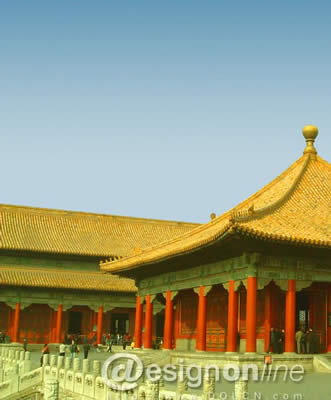3 Case 2: Deconstructing Traditional Colors
The so-called traditional color refers to a nation that has passed down from generation to generation and has a distinct artistic representation. Using traditional colors as a theme, learning traditional color art by deconstructing traditional colors aims to obtain creative inspiration from traditional color styles. The traditional color model embodies the experience and wisdom of the ancients in exploring color laws. If the viewpoint is moved to these traditional colors, it will be surprising to discover that the color combinations created and precipitated by our ancestors in the long history of history What are the similarities between the contrast and reconciliation laws in color composition teaching? Learn from the traditional colors and combine the concepts of local traditional culture and western colors to guide students to observe the color combinations that they had previously turned a blind eye to, arouse their collective unconsciousness of traditional colors, help them understand the aesthetic features of Chinese traditional colors, and enhance our country’s aesthetics. The spiritual connotation in modern color design, thus inheriting the tradition to serve contemporary design.
China's "primary colors" - five elements and five colors
In the traditional Chinese color culture, our ancestors put forward the “primary colors†of China—“five elements and five colorsâ€, and formed the unique color concept of the Chinese nation. There is a so-called “color but five, five-color changeâ€. It is also not unreasonable to see "[6]. The so-called five colors in the yin and yang elements are composed of black, white, and red, green, and yellow. The three primary colors in the contemporary Western world are "RGB": red, green, blue, and "three primary colors" (CMY). : Blue, magenta, yellow. China's blue color is between blue and green, so it is actually red, yellow, green and blue. From a certain point of view, it also covers the three primary colors of color and color. In contrast, China's five elements of "primary colors" are still more black and white, which means that they contain two parts, colored and achromatic.
Figure 3 is the Zhonghe Temple in the three main halls of the Imperial Palace. The sky above the eyes is a blue-blue sky. Under the blue sky is a golden glazed roof. Under the roof is a blue-green tone bracket and a painting-decorated eaves. The roof is under the roof. Rows of red columns and doors and windows, the entire palace is located on the white marble platform above the platform is dark gray square floor tiles. The unique building of Zhonghe Dian is a combination of five elements, namely yellow (glazed tiles), blue (bow brackets and colored pictures), red (posts and windows), white (white marble platform) and black (dark gray floor tiles). Are our ancestors using the blue sky in the imperial city architectural colors - yellow tiles, blue-green color paintings - red columns and doors of the two complementary colors is a coincidence? The author believes that the ancients have early discovered the visual residual image rule that complementing each other can be set against each other, and its use in the palace building has created a strong contrast of colors, giving people a very distinctive color appeal, reflecting the Chinese people's color wisdom.

Figure 3 Palace of the Imperial Palace
(to be continued)
Child proof glass jars with lids,Child resistant Flower Jar ,Child resistant packaging ,Glass jar child proof ,Glass storage jar ,Glass jars with lids
NANTONG OUFEIYA IMP& EXP CO.,LTD , https://www.jsnantongoufeiya.com